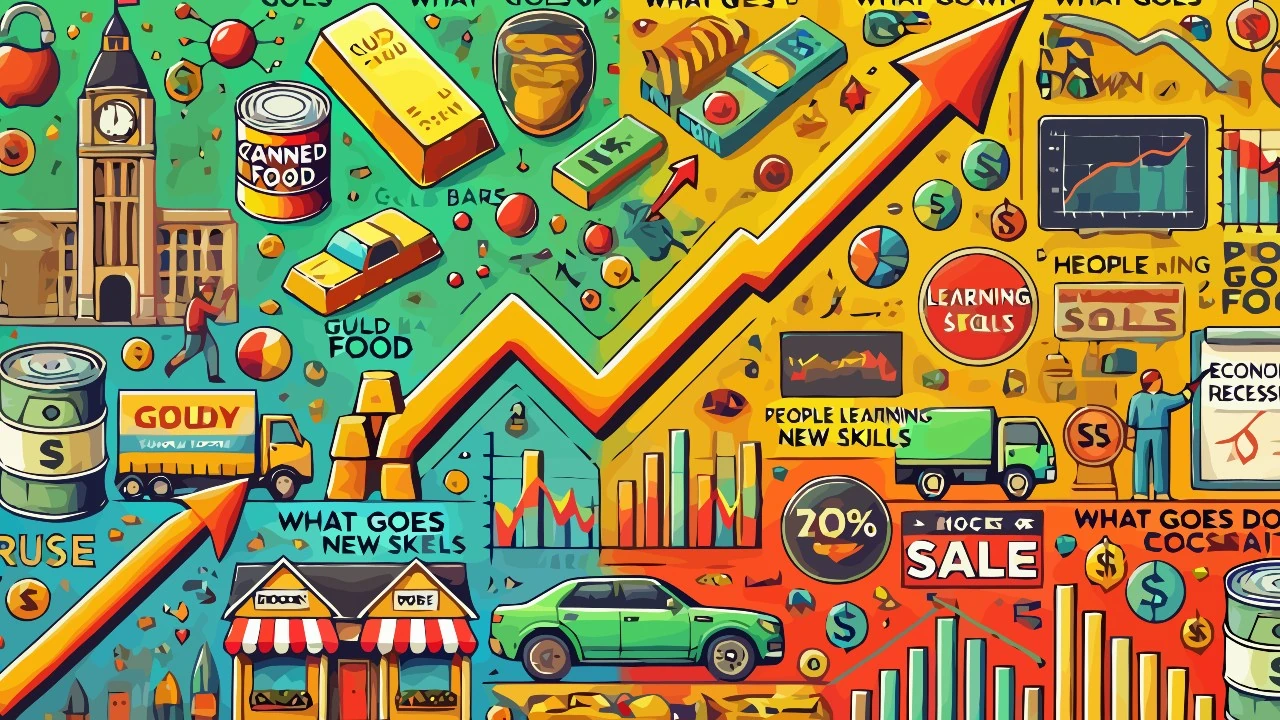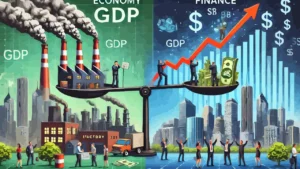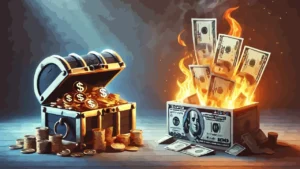In times of economic uncertainty, knowing how markets move can make the difference between a disoriented saver and an informed one. In this article, we explore with clarity and conciseness how the main investment categories react during a recessionary phase.
Disclaimer:
The information provided does not constitute a solicitation for the placement of personal savings. The use of the data and information contained as support for personal investment operations is at the complete risk of the reader.
Contents
#1. What is an economic recession
A recession is a significant and prolonged slowdown in economic activity. It occurs, by definition, when gross domestic product (GDP) declines for at least two consecutive quarters. This means that households spend less, businesses invest less, production falls, and jobs are reduced.
During a recession, confidence in the future declines. People become more cautious, save more, and consume less. Businesses, seeing demand for their goods and services decline, begin to cut costs, sometimes by laying off workers or postponing projects.
This creates a vicious circle: less consumption leads to less production, which in turn leads to less employment, and so on. Banks become more cautious in granting loans, making the situation even worse. In such moments, the priorities become safety, liquidity and stability.
This dynamic affects not only everyday life, but also the financial markets. Investment goods react sensitively to changing economic conditions. Some goods are sold off en masse, others become temporary havens for capital seeking protection.
Understanding which assets tend to lose value and which to gain value in this context is essential to face a recession with greater awareness.
#2. Goods that tend to fall
In the context of a recession, many investment assets see a decrease in their value. This happens because uncertainty leads investors to sell what they consider risky or non-essential:
- Stocks represent ownership shares in a company. When the economy slows down, corporate profits tend to decline. The hardest hit sectors are the so-called cyclical ones, such as automobiles, tourism, luxury clothing. These sectors are highly dependent on consumer spending, which in difficult times tends to focus on essential goods.
- Industrial raw materials, such as copper, iron, and oil, also tend to lose value. If production slows, demand for these resources also declines. The price of oil, for example, is closely linked to economic activity: less transportation, less energy consumption, less need for fuel.
- The real estate sector can suffer from recession. In times of economic hardship, people are hesitant to take out mortgages and buy homes. Businesses, on the other hand, may postpone expansion and thus reduce demand for commercial space. All of this can lead to stagnation or a decline in real estate prices.
- Some more complex or less liquid financial assets, such as high-risk corporate bonds, can suffer large losses. Investors are becoming more selective and trying to avoid the possibility of default by withdrawing capital from companies perceived as vulnerable.
#3. Goods that tend to rise
Despite the difficulties, some categories of assets tend to gain value during a recession. These are mostly assets perceived as safe or “safe havens”:
- Government bonds of countries considered reliable. In Europe, for example, German bonds are seen as a safe haven. In the United States, the same is true for Treasury bonds. In times of crisis, investors seek protection, and they find it in these instruments that offer stable returns and low default risks.
- Gold , a precious metal that does not earn interest, is universally recognized as a symbol of value and stability. When the value of money falters and markets become volatile, gold attracts capital precisely because of its ability to retain value over time.
- Some currencies considered “safe havens” can appreciate. Examples are the Swiss franc or the Japanese yen. In times of uncertainty, these currencies attract demand because they are associated with stable countries, with solid economies and low inflation.
- Some stock sectors may be more resilient: these are the so-called defensive sectors, such as pharmaceuticals, food and essential services. People continue to buy medicine, food and pay bills even in difficult times, and this provides a certain stability to the revenues of companies in the sector.
#4. The role of central banks
During a recession, central banks play a key role in trying to stabilize the economy. Their main tool is the benchmark interest rate, which they can lower to stimulate consumption and investment.
When rates fall, credit becomes cheaper: mortgages and loans cost less, making it easier to access liquidity. This should stimulate domestic demand. Lower rates also make new government bonds less profitable, pushing up the value of those already issued.
Central banks can also intervene directly in markets by buying securities, a practice known as “quantitative easing.” This type of intervention serves to keep yields low, increase liquidity, and reassure investors.
These interventions profoundly affect the value of financial assets. In particular, they push up the price of bonds already in circulation, since they offer higher yields than those that will be issued later.
Safe havens like gold can also benefit from these policies. When real rates (i.e. rates net of inflation) go negative, holding gold becomes cheaper than holding cash.
However, the effectiveness of central banks also depends on the trust that citizens and investors place in them. Without trust, even the most powerful tools can have a limited effect.
#5. Different recessions and reactions
Not all recessions are the same, and consequently, neither are the reactions of financial assets. Some recessions are short and technical, others are deep and structural. Some affect only certain sectors, others ripple across the global economy.
For example, the 2008 recession was born out of a banking and real estate crisis, and had devastating consequences on a large scale. In that case, the hardest hit assets were bank stocks and real estate, while gold and government bonds strengthened significantly.
The 2020 recession, on the other hand, was caused by a “pandemic”. The sudden and global nature of the crisis led to an initial widespread collapse of all assets, followed by a rapid recovery thanks to massive interventions by central banks and governments.
Geography also matters: a recession in Europe can have different effects than one in the United States or Asia, depending on the economic policies adopted and the structure of the local economy. Furthermore, the perception of risk changes over time and space. In the past, gold was almost always seen as a safe haven; today, even cash or certain currencies can be, depending on the situation.
Knowing the dynamics of different recessions allows us to better understand the reactions of financial assets and to evaluate more clearly how to move forward in the present.











Leave a Reply